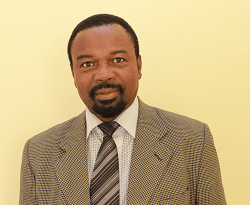I asked you in 2020, just when Covid-19 hit our shores, serving as a dress rehearsal for global economies.
Is 2025 another record year for the pandemic? How are you preparing for the future of work, your health, and our environment?
In the news this week, we read of health experts warning about a triple virus surge this winter. Are you prepared for another COVID-like experience in 2025?
As we step into 2025, the echoes of past pandemics still reverberate through public health systems, economic structures, and societal norms worldwide.
From the devastating toll of COVID-19 to the lessons learned in containment, lifestyle changes, vaccine development, and crisis management, humanity has made significant strides in preparedness.
However, with the increasing frequency of emerging infectious diseases, concerns about another global pandemic loom large. How prepared are we as a people, and have we truly fortified our defenses against another health catastrophe? Be agile.
“Health experts are warning of a triple virus surge this winter, with COVID-19, influenza, and RSV already spreading rapidly”. Have you chanced upon any research updates on vaccine effects and impact after the COVID-19 pandemic? You may want to read the Lancet, Congressional, and other published reports, which describe in detail the devastating side effects of the COVID-19 jabs.
“There have been more than 80,000 confirmed influenza cases in Australia so far this year, up to 22nd May 2025, a more than 50 per cent jump from the same period last year.
Seasonal flu is a common and highly contagious respiratory infection usually caused by influenza A or B viruses, but there are multiple subtypes and strains.
Meanwhile, COVID-19 cases are expected to skyrocket this winter with a contagious strain of the Omicron variant to infect a large percentage of Australians.
Variant LP.8.1 was identified as the main culprit of large outbreaks overseas in late 2024 and early 2025, and was responsible for three in five Covid cases in the UK in March, according to media reports.
‘Recognizing symptoms like high fever, fatigue, wheezing, or difficulty breathing early can ensure families can take swift action or seek urgent medical care.
As a Lifestyle Interventionist, I will advise you to quickly change your lifestyle and diet if you have any underlying health conditions.
Make use of the natural ginger, garlic, lemon, and other natural health boosters, but reach out for tailor-made solutions and seek your doctor’s advice if you have any chronic illness.
To understand the current risk landscape, it’s important to note that pandemic threats are shaped by multiple factors, including environmental changes, urbanization, globalization, and the ever-evolving nature of pathogens.
The rise of zoonotic diseases—those transmitted from animals to humans—remains a pressing issue, exacerbated by deforestation, climate change, and high-density farming practices.
Additionally, antimicrobial resistance has complicated medical responses, posing a significant challenge to treating bacterial infections effectively.
Experts warn that the interconnectedness of the world’s population means any outbreak can spread rapidly, turning localized incidents into global emergencies within days.
In 2025, as new strains of viruses emerge and existing infectious threats persist, the question remains: Has humanity learned from past failures and strengthened its ability to manage another pandemic?
In discussing global surveillance and early warning systems, it’s imperative to note that one of the fundamental aspects of pandemic preparedness is the ability to detect outbreaks early and respond swiftly.
While technological advancements in AI-driven health monitoring and global disease surveillance have improved, gaps remain. The World Health Organization (WHO), alongside health agencies worldwide, continues to push for real-time data sharing and improved collaboration between nations.
Countries have started investing in predictive modeling to anticipate disease hotspots, using artificial intelligence to analyze patterns in travel data, climate conditions, and genetic mutations in viruses.
What is your government doing? Do you know? Several initiatives and global projects aim to identify potential pandemic pathogens before they pose a direct threat. However, despite these efforts, bureaucratic delays, political reluctance, and resource disparities still hamper early responses.
How about vaccine and therapeutic readiness?
One of the most significant breakthroughs in pandemic management has been the rapid development of vaccines. Messenger RNA (mRNA) technology, initially brought to prominence during the COVID-19 pandemic, now allows scientists to create vaccines in record time.
In 2025, researchers will continue to refine universal vaccines that could preemptively combat multiple viral families, reducing the need for lengthy development processes for vaccine enthusiasts.
Yet, vaccine equity remains a big challenge. While wealthier nations benefit from advanced research and stockpiled supplies, lower-income countries struggle with access due to funding limitations and logistical barriers.
Strengthening global vaccine distribution networks, ensuring localized manufacturing capabilities, and fostering international cooperation remain crucial for preventing the disparities witnessed in previous pandemics.
On public health infrastructure and medical supply chains one will realize that hospitals, healthcare providers, and emergency response units remain the frontline defense against pandemics.
Investments in healthcare infrastructure have increased post-COVID-19, with many governments allocating funds to expand facilities, enhance healthcare worker training, and improve stockpiles of essential medical supplies.
However, persistent vulnerabilities remain. Supply chain disruptions—highlighted during previous global crises—show that dependency on a limited number of manufacturers and international trade routes can cripple pandemic response efforts.
The need for localized medical supply chains has become apparent, prompting governments to incentivize domestic production of critical goods such as personal protective equipment (PPE), ventilators, and antiviral medications, as well as lifestyle change and investment into organic diets.
Moreover, misinformation continues to be a major hurdle. Despite progress in health communication strategies, distrust in scientific recommendations, vaccine skepticism, and the spread of misleading health narratives hinder swift action during public health emergencies.
What is the Role of Governments and Policy Frameworks?
Government preparedness plays a critical role in pandemic response. Countries that learned from past failures have strengthened their public health laws, allocated emergency budgets, and set up rapid response task forces.
International agreements, such as the Pandemic Treaty proposed by the WHO, aim to create a legally binding framework for nations to collaborate during pandemics.
Some governments have adopted flexible lockdown strategies that mitigate economic damage while controlling outbreaks.
Additionally, policies supporting telemedicine and digital healthcare advancements allow patients to receive medical consultations remotely, reducing burdens on hospitals.
However, political divisions and inconsistent enforcement of health measures pose challenges. Some countries remain resistant to global health initiatives, citing sovereignty concerns, which may hinder unified pandemic response efforts.
How about Individuals, Churches, Mosques, and Community Preparedness
Beyond institutional preparedness, individuals and communities play a pivotal role in mitigating pandemic impact. Personal hygiene practices, health education, lifestyle changes, and emergency preparedness are essential in reducing transmission rates.
Many populations have become more health-conscious post-pandemic, embracing regular sanitation habits, social distancing where necessary, and seeking vaccinations for emerging infectious threats.
Community-led initiatives, such as local health monitoring programs and grassroots education campaigns, empower populations to take proactive steps in pandemic readiness.
However, economic inequalities still affect the ability of some communities to access healthcare resources, making targeted policy interventions necessary.
Economic Implications and Workforce Adaptation
Pandemics are not just health crises—they are economic disasters. The disruptions caused by lockdowns, travel bans, and strained healthcare systems impact industries worldwide.
In 2025, businesses have adapted by integrating flexible work-from-home models, improving supply chain resilience, and investing in automation to sustain operations during crises.
Governments and financial institutions continue to refine pandemic-related financial policies, ensuring better economic safety nets, unemployment relief programs, and emergency funding to stabilize markets.
Nevertheless, small businesses and vulnerable workers—especially those in service industries—remain at high risk of economic fallout.
Ethical Considerations in Pandemic Response
Ethical dilemmas arise in every pandemic: Who gets priority access to vaccines? How do nations balance individual freedoms with public health mandates? How can misinformation be combated without infringing on free speech?
In 2025, these questions remain central to policymaking. While technological advancements provide efficient ways to track infections and enforce quarantines, concerns about data privacy and human rights persist.
Striking a balance between necessary restrictions and ethical governance remains a challenge for global leaders.
Are We Truly Prepared?
The world has undeniably advanced in pandemic preparedness since the early 2020s. Scientific progress, improved global collaboration, and public awareness have strengthened our ability to respond effectively.
However, lingering challenges—including disparities in healthcare access, geopolitical tensions, misinformation, and economic vulnerabilities—suggest that preparedness is still a work in progress.
As the possibility of another pandemic looms in 2025, the resilience of nations and communities will be tested once again.
The lessons learned from past crises should serve as both warnings and guiding principles: pandemic preparedness is not a one-time effort but an ongoing commitment to safeguarding global health.
Would you or your community want to explore the lifestyle change approach to pandemic preparedness and management? Reach out to benefit from my Birthday Service Project initiative, geared towards supporting your Pandemic Preparedness for free. Book your slot @Sarahtistagh across all networks.
Baptista is a multifaceted hybrid professional known for her work on the future of work. She is the CEO of FoReal HR Services. Building a team of an efficient & effective workforce is her business. Affecting lives is her calling! She is an HR Generalist, International Development Expert, Public Speaker, Researcher, and Lifestyle Interventionist. You can reach her @Sarahtistagh across all platforms.










